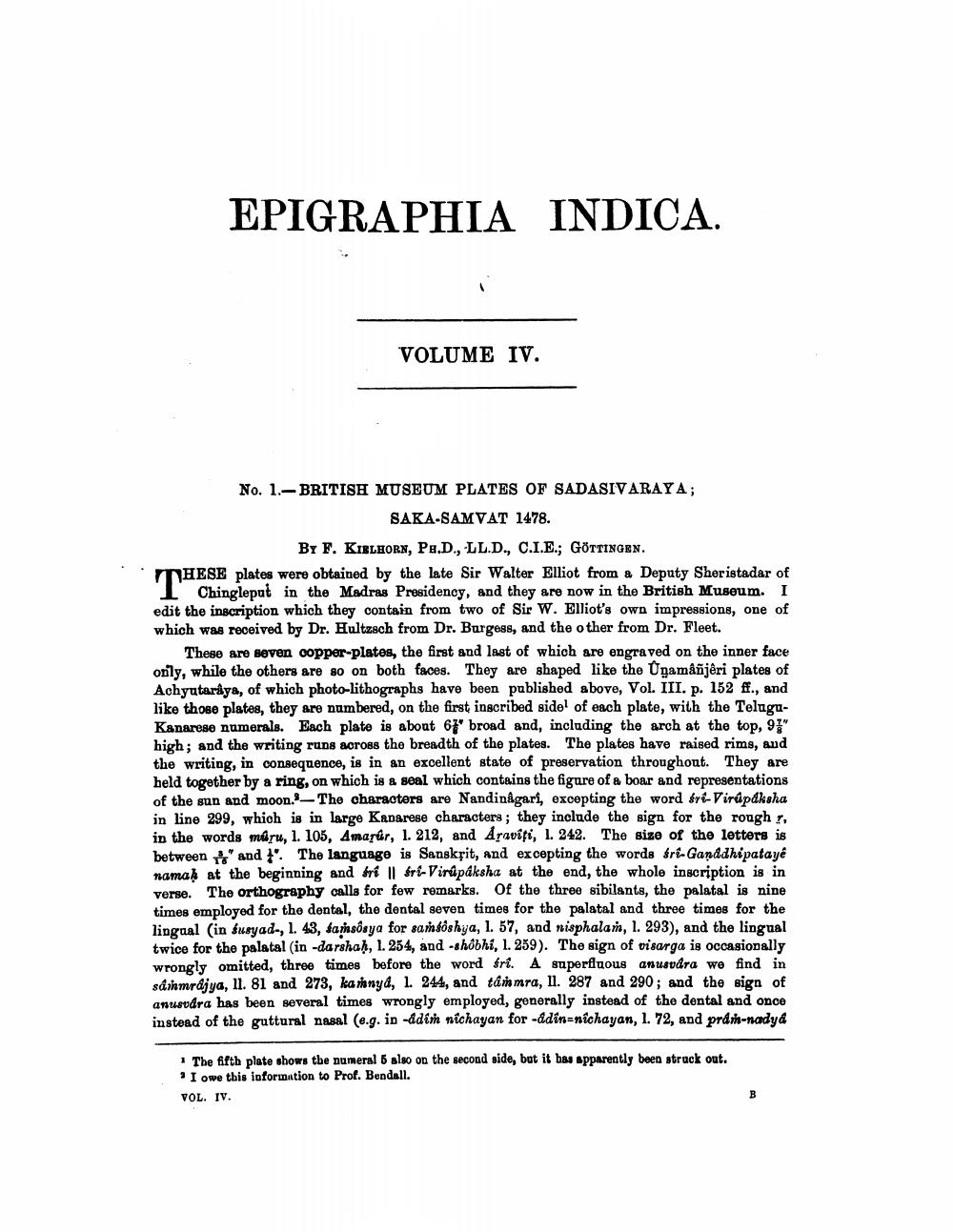________________
EPIGRAPHIA INDICA.
VOLUME IV.
No. 1.-BRITISH MUSEUM PLATES OF SADASIVARAYA;
SAKA-SAMVAT 1478.
BY F. KIELHORN, PH.D., LL.D., C.I.E.; GÖTTINGEN.
THE
HESE plates were obtained by the late Sir Walter Elliot from a Deputy Sheristadar of Chingleput in the Madras Presidency, and they are now in the British Museum. I edit the inscription which they contain from two of Sir W. Elliot's own impressions, one of which was received by Dr. Hultzsch from Dr. Burgess, and the other from Dr. Fleet.
These are seven copper-plates, the first and last of which are engraved on the inner face only, while the others are so on both faces. They are shaped like the Unamâñjêri plates of Achyutaraya, of which photo-lithographs have been published above, Vol. III. p. 152 ff., and like those plates, they are numbered, on the first inscribed side of each plate, with the TeluguKanarese numerals. Each plate is about 67 broad and, including the arch at the top, 93" high; and the writing runs across the breadth of the plates. The plates have raised rims, and the writing, in consequence, is in an excellent state of preservation throughout. They are held together by a ring, on which is a seal which contains the figure of a boar and representations of the sun and moon. The characters are Nandinâgari, excepting the word śri-Virupaksha in line 299, which is in large Kanarese characters; they include the sign for the rough r. in the words muru, 1. 105, Amarúr, 1. 212, and Araviti, 1. 242. The size of the letters is between" and ". The language is Sanskrit, and excepting the words śri-Gandhipatayê namaḥ at the beginning and ri || ri-Virupaksha at the end, the whole inscription is in verse. The orthography calls for few remarks. Of the three sibilants, the palatal is nine times employed for the dental, the dental seven times for the palatal and three times for the lingual (in susyad-, 1. 43, samsosya for samsôshya, 1. 57, and nisphalam, 1. 293), and the lingual twice for the palatal (in -darshaḥ, 1. 254, and -shobhi, 1. 259). The sign of visarga is occasionally wrongly omitted, three times before the word śrt. A superfluous anusvára we find in sammrajya, 11. 81 and 273, kamnya, 1. 244, and tâmmra, 11. 287 and 290; and the sign of anusvára has been several times wrongly employed, generally instead of the dental and once instead of the guttural nasal (e.g. in -ddim nichayan for -ddîn-nichayan, 1. 72, and prám-nady &
The fifth plate shows the numeral 5 also on the second side, but it has apparently been struck out. I owe this information to Prof. Bendall.
VOL. IV.
B




